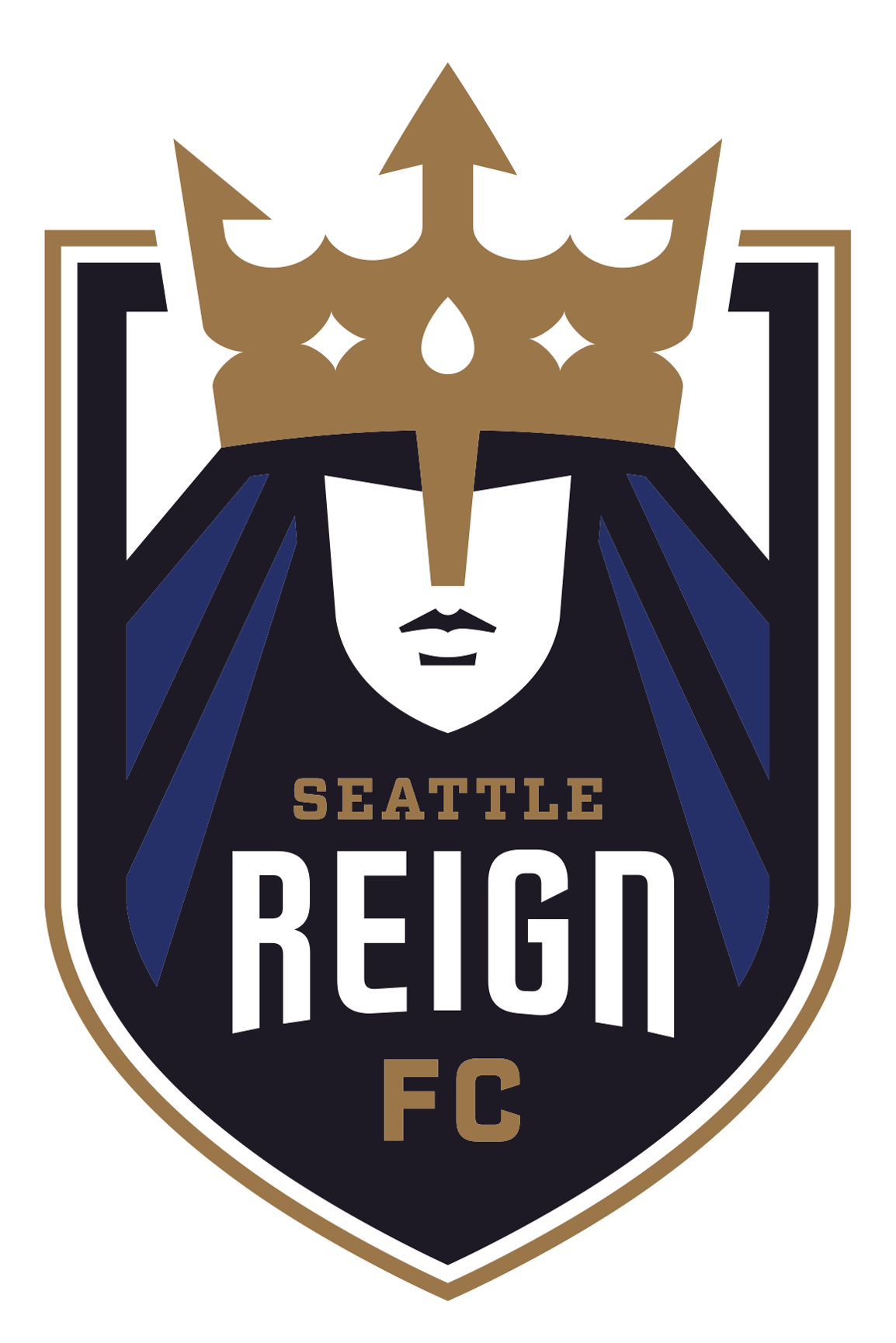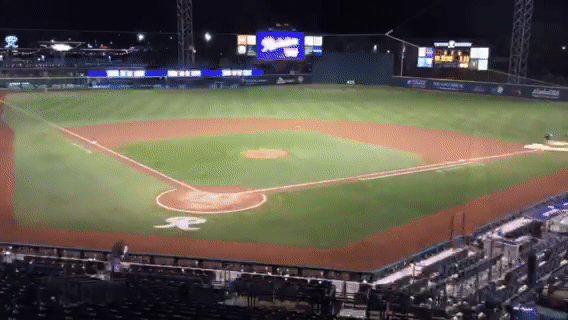Transforming Cheney Stadium Into a Field of Dreams
Reign FC shares its new home at Cheney Stadium with USL Championship side Tacoma Defiance (formerly S2) as well as its original tenant, the Tacoma Rainiers, who are a Minor League Baseball team in the Pacific Coast League (PCL) and the Triple-A affiliate of the Seattle Mariners.
The groundskeepers who work at Cheney Stadium have the critical role of transforming the field from a baseball diamond to soccer pitch in under 24 hours. It is a demanding responsibility—Cheney Stadium will host 99 baseball and soccer games between now and October 19, roughly one event every two days.
The head groundskeeper at Cheney Stadium, Michael Huie sees more of the action that goes on in Cheney Stadium than even the most hardcore sports fans. However, he is not watching the same things that a fan would. He’s busy focusing on how the field is performing, from the grip of the infield clay to the health of Cheney’s grass.
Entering his fourth year at Cheney Stadium, Huie has maintained baseball fields from New Mexico to Michigan, with stints in the Major Leagues with the Baltimore Orioles and the Seattle Mariners. But Huie was in for a curveball when Rainiers president Aaron Artman came to him one day and asked if Cheney Stadium could also work as a soccer venue.
“It was somewhat of a shock, but at the same time there had been other teams that had done it,” Huie said. “I’m close with a couple other guys who had gone through the process. It was a reality check, but Aaron asked, ‘Hey, is this possible?’ At first, I said, ‘I don’t know. Let me look. Let me pull out the tape and measure.’”
What Huie discovered after crunching the numbers was that Cheney Stadium was perfectly situated to hold a soccer pitch that was 110 yards long and 70 yards wide—large enough to meet the FIFA standards for international and professional matches.
So, the field had the space, but how to make the vision a reality?
“It was a lot of sitting in the office, trying to mentally go through the logistics of how do we do this, and do it the right way,” Huie said. “We don’t want to do this half-way. We want this to be a quality product. Can we make that happen? It was a few days of talking to guys who I know who have done it and getting together with Desert Green Turf, our sod provider.”
One of the chief concerns for the feasibility of the project was sightlines. Many baseball stadiums that convert to soccer pitches play across the outfield to maximize the use of the existing grass, laying sod over the upper part of the infield diamond. This comes at the cost of leaving the majority of seats concentrated behind home plate 120 feet from the action.
Huie decided to preserve the sightlines and improve the fan experience in Cheney through a groundskeeper’s most difficult feat: removing the pitcher’s mound.
In baseball, pitcher’s mounds are sacred. Runners and fielders alike are careful not to step on the mound. Mounds are also precise: 60-feet-6-inches from the rubber to home plate and exactly 10 inches high. Caution was mandatory.
“That was my number one concern coming from a baseball background,” Huie said. “The mound is your baby. That’s where all the specs are put in. Everything is designed within an eighth of an inch. How are we going to blow this thing up, take it off the field and then get it back in to be playing baseball 24 hours later?”
Help and advice came from Clay Wood, who has served as the head groundskeeper for the Oakland Athletics for 25 years and has frequently removed that club’s mound for Oakland Raiders games in the National Football League.
On Wood’s advice, the Rainiers acquired a trailer with four hydraulic winches, which lift the 22,000 pounds of clay and the steel base of the pitcher’s mound out of the ground. The tractor pulling the trailer then jackknifes it, to prevent the trailer from falling into the 10-inch hole left in the mound’s absence.
The mound is then hauled away for storage and replaced with a perfect disk of sod that is kept on site and maintained by the field crew. The 11,000-pound circle of grass sits completely flush to the rest of the infield grass and is the only piece of sod that is reused during each conversion. In all, the mound replacement—which Huie calls the most critical portion of the job—can be completed in 90 minutes.
Huie’s crew, consisting of 12 individuals and Taz, his Shepherd-Lab mix, get to work on the rest of the infield. In addition to the grass for the conversion, Desert Green Turf provides support to the crew and a fraze mower—an eight-foot wide mower with an adjustable blade designed to cut grass, but used by the crew to remove just enough clay from the infield to allow the installed grass to sit flat.
“I know a lot of other teams just buy rototillers and use rakes to try and grade the clay,” Huie said. “We fraze mow it so it’s out. We’re usually done mowing it in an hour, which probably saves us 15 to 20 hours of work cutting it out by hand and rototilling it. That’s a huge win.”
The next 20 minutes are spent laying out a custom-fitted landscape tarp over the clay and watering it down so the installed grass doesn’t slip around. The tarp protects the carefully maintained balance of the clay, keeping sand and dirt from the sod from diluting it.
Then comes the grass, delivered by Desert Green in rolls 56 feet long and four feet wide, designed to minimize the number of seams on the playing field. Desert Green also provides two install machines, which take the rolls from the forklift and begin the process of laying them over the infield. Other members of the crew follow behind, tucking in seams and adding sand wherever the surface is not sitting evenly enough. This is the most time-intensive phase of the process, usually taking the crew five hours to complete.
Huie follows behind with a three-and-a-half ton roller, massaging the new grass down and helping everything settle. After an hour on the roller, the field surface is set.
The home stretch beckons. The crew finds the marks they left from the last conversion and paints the lines, setting up the goals in their anchor points. The new grass, lacking roots, is given plenty of water to preserve the playing surface.
Within as little as 10 hours, Huie and his team have changed Cheney Stadium from a baseball diamond to a soccer pitch, all while maintaining the close sightlines in the main stand behind home plate.
“I’m very proud of what we’ve been able to do,” Huie said. “I feel very lucky to have the backing of the organization to provide us with the things we need. That roller is huge. If I didn’t have that, this would be way more difficult. There was a Christmas list that I was brainstorming from day one. ‘What do we need?’ The brainstorming process allowed us to be able to do it. You need a lot of equipment. Desert Green helps a lot with the fraze mower, that’s a really specialized piece of equipment. Their whole crew, their install machines. There is a lot of hand-work but it could be way worse. We take a lot of pride in it, but we feel very lucky, especially in comparison to other teams.”
Huie’s methods have caught the attention of other organizations. At least four other baseball teams have contacted the Rainiers to discuss Cheney Stadium’s conversion process. Huie is glad others have taken notice, but is quick to pass some of the credit on to those who counseled him.
“Word is out there that we have a good method, so we’re taking a lot of pride out here,” Huie said. “We’ve had people out here checking it out to see if it’s feasible for them. I appreciate Clay Wood, I appreciate all the people I talked to in the brainstorming stages. I appreciate how passionate people are in this industry and how excited they are. I take a lot of pride in being able to help someone take that next step.”
“I take a lot of pride in the product, but I take a lot of pride in the organization and doing everything the right way. We’re not taking any shortcuts, we’re trying to provide the best product.”
For Huie, though, the greatest pleasures are the simple ones at the end of the transformation.
“My favorite part is grabbing a beer after a long hard flip and sitting behind home plate and just staring at it,” Huie said. “There’s no better feeling than getting the ball field ready for a baseball homestand or a soccer match. You put in a ton of time and effort, skipping lunch to get this done. It doesn’t stop, but it slows down really quickly. You get there, and then it’s maintenance. Those last couple days up to a field conversion, you’re leading up to a grand finale. When you get there, the whiteboard is clear in the office and all the tasks are taken care of. I can just stare at it. That’s why I do what I do. That’s what keeps me going. No one wants to work 80-100 hours a week if they’re sane. There’s got to be something that drives you. This is what drives me.”

